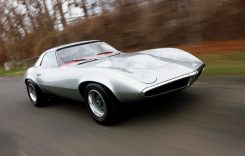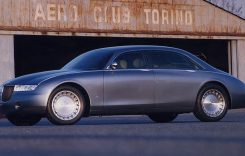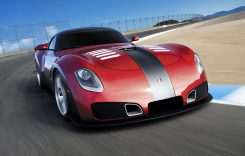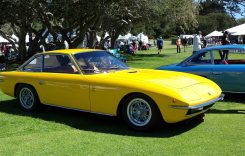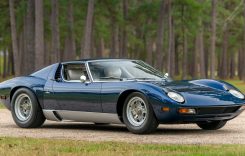Sport-touring tires aren’t just for bikes with adjustable windscreens, heated grips and hard luggage anymore. According to a market study by Pirelli nearly 40% of all radial motorcycle tires sold in Europe in 2011 and 2012 were of the sport-touring type while only 12% of the market are ST models. Recognizing that supersport, naked and even adventure-bike owners were also fitting sport-touring skins to their machines, Pirelli decided to create a tire that will satisfy commuters, tourers and weekend warriors in a wide range of segments. Enter the Pirelli Angel GT.

The Angel GT replaces the Angel ST with a focus on offering better performance, but just as importantly, more consistency over the life of the tire. Pirelli set the goal for the GT to have the best mileage in the segment and improved wet performance while retaining the excellent handling qualities for which the brand is known. To accomplish this lofty goal a total redesign took place.
While the tread pattern of the GT looks very similar to the older ST model, the land and sea (rubber and tread groove) ratio has been increased by 10% on the front and 16% on rear. Longer continuous grooves evacuate more water and the flow continuity has been improved. Tread direction has also been optimized, replacing two grooves with one larger cut at a steeper angle to the sidewall. All this means more rubber to meet the road for dry grip and more effective water shredding properties for wet duty. Another benefit of the tread redesign is the center ribbon of rubber has increased for better braking on the front tire and increased mileage for the rear. Finally the groove depth on the shoulder has been decreased for more grip and stiffness when leaned over.
Slip force as the tire rolls along the pavement is one of the biggest culprits of premature wear; to counteract this Pirelli has created a new generation low curvature profile on the rear tire. The Angel GT is now flatter in the center for a larger contact patch to further help with mileage performance, while the sides are 5% steeper to increase lean angle. Because of the larger footprint created by the new shape, a WSBK racing-derived carcass is employed to give the tire more structural support. This decreases elongation as load increase for a sportier feeling tire.
The third side of a tire’s construction triangle is the compound. Up front a 100% silica monocompound covers the entire surface. At the rear a dual-compound sees the same 100% silica on the sides for dry and wet grip and a 70% silica compound in the center is used for mileage and high-speed stability. The center stripe accounts for 20% of the entire surface of the rear tire. A new continual mixing process combines hybrid polymers, reactive resins and nano materials to maintain traction performance as tire temps rise.
Pirelli tasked the Motorrad Test Center to conduct an independent test to compare the Angel GT’s mileage and handling performance falloff over the life of the tire. The results claim the Pirelli tops the usable life span over the Michelin Pilot Road 3, Bridgestone BT023, Dunlop Sportmax II and Continental Road Attack 2 – in that order. It also found that the Angel GT has the most consistent feel and performance as the tire wears.
On the Deck and Track
Pirelli brought the media to Southern Italy to put the Angel GT to the test in some very unique situations. The first day the group was shuttled to the port city of Taranto where we would be conducting the most unusual braking tests ever conceived for a press introduction. Three 2013 Kawasaki Ninja 1000’s sat waiting for on the deck of Italy’s flagship aircraft carrier, the Cavour. That’s right sportbikes on the flight deck of an aircraft carrier!

Before each run the deck was flooded with seawater followed by a blast down the deck at 60-70mph with a hard stop at the end to get a feel for the wet grip of the GT. While this was definitely one of the coolest things I’ve done on a motorcycle, not much could be gleaned from this test. The Cavour’s flight deck surface has far more grip than even the stickiest asphalt. In fact, the Pirelli engineers confirmed that there was a 50% higher coefficient of friction than the average road. So yes, I stopped, and I stopped fast. So fast that that the Ninja’s ABS computer would go screwy and try to activate as the rear tire lifted and the front tire decelerated at a rate outside the parameters set by Kawasaki.
While the first day of testing was quite a thrill, the second day would prove the mettle of the Angel GT on handling at the Porsche-owned Nardo Technical Center. The 3.7-mile course was designed to replicate conditions in the real world and was described by the safety team as “not a racetrack.” Undulating pavement patches, mixed asphalt surfaces and limited runoff areas confirmed that this was meant to test tires, not set lap times. But any ribbon of black linked together at each end is a racetrack in the eyes of a true motohead, and after a few sightings laps it was ridden in accordance to that unspoken rule.
A bevy of motorcycle choices were available from full-on sport touring behemoths to naked bikes to even a couple of Yamaha YZF-R1s. For the first session I went for a 2013 Yamaha FJR to really get a sense of the Angel GT on something that would be the most obvious application.

I’ll just cut to the chase and say I am very impressed with the Angel GT. Warm up time was amazingly quick, reaching operating temperature and optimal grip within a half of a lap. The tires were more willing to get down to business than I was on the FJR, and it took several laps before I became comfortable to really give it the business. When full stick was applied I was able to actually get my knee on the ground on the big Yamaha. Remember this is a 637-pound sport tourer.
Lean-in takes minutely more effort with the flatter profile of the rear tire than Pirelli’s sport offerings, but it’s not an annoyance just an observation. Once off the centerline of the tire movement towards the edge of the Angel GT is very linear and there is no stepped feel when crossing over from the high wearing center compound to the stickier outside. The level of grip is phenomenal for a tire that is must wear long and have wet grip. With the portly FJR I was able to push the front-end but the tire never let go unexpectedly. The GT lets you know things are getting loose and then breaks free with an easy slide rather than a violent snap.
Only once did I have a moment that was pucker-worthy on the Angel GT. While flogging a Triumph Street Triple, I got on the gas too hard before the apex of a tight left and the rear-end stepped out while at full lean. Even though the tire let go, it was just like the front, with the slide was slow and controlled. Although my error got me sideways, the predictable nature of the tire’s grip made it possible to maintain the throttle setting and drive right out of the slide.

It’s important to note the testing of the Angel GT on this occasion was at a pace that would never be possible on the street and was even ridiculous at times on the handling course. Pushing the limit on the track just proves how capable these Pirellis are on the street. Granted they don’t have the velco-grip of Pirelli’s sport rubber, but they are well above the level expected from a sport-touring tire. And they will last a whole lost longer.
